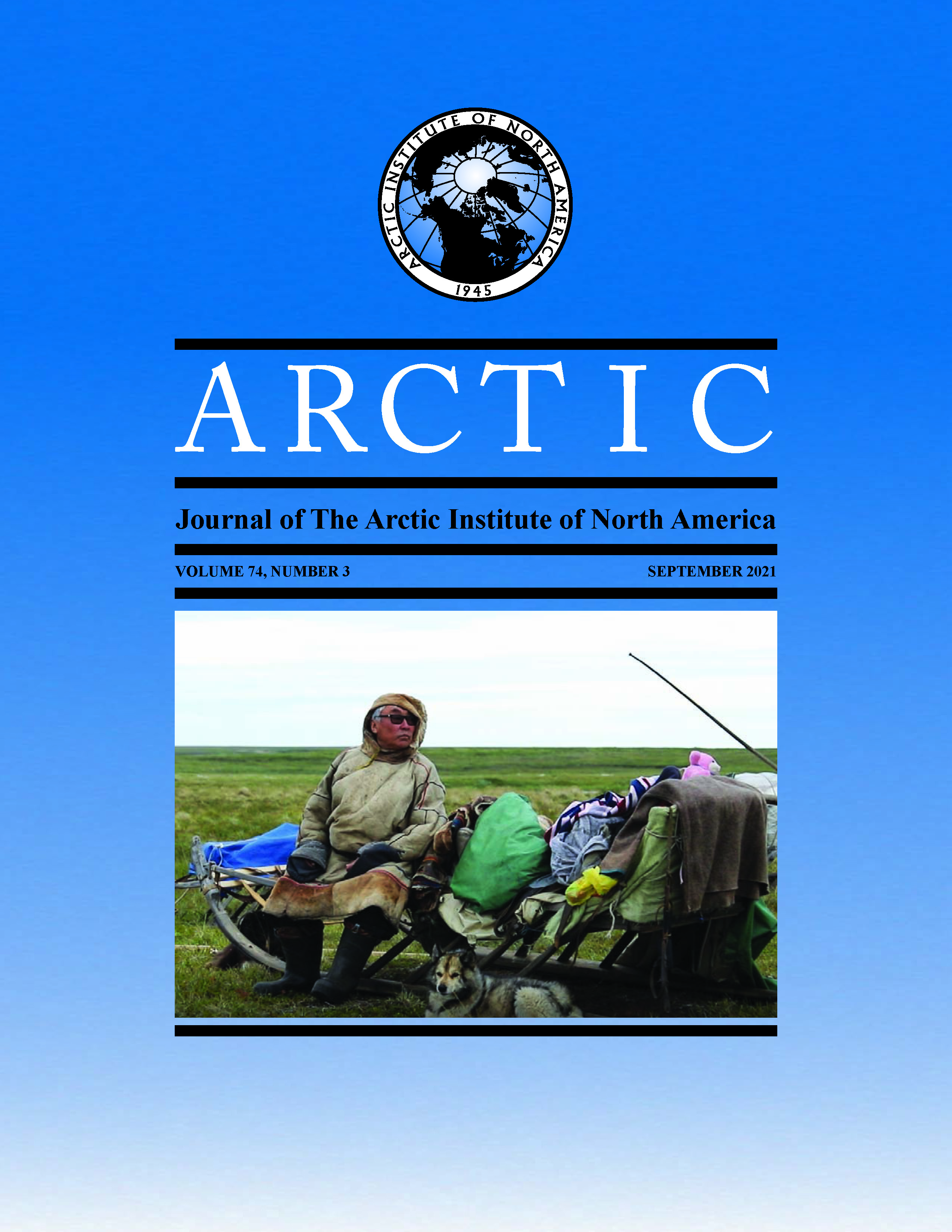“These Trees Have Stories to Tell”: Linking Dënesǫ́łıné Oral History of Caribou Use with Trample Scar Frequency on Black Spruce Roots at Ɂedacho Kué
DOI:
https://doi.org/10.14430/arctic73160Аннотация
For thousands of years Ɂedacho Kué (Artillery Lake, Northwest Territories) has been a key water crossing site for barren-ground caribou (Rangifer tarandus groenlandicus). Human disturbance of barren-ground caribou habitat in northern Canada has emerged as an important focus of study in the last decade; particularly in the Bathurst range of the Northwest Territories where caribou populations have declined by more than 95% since the 1980s. Guided by local Indigenous leaders and Elders, a collaborative research project was developed with the Dënesǫ́łıné people of Łutsël K’e Dëne First Nation (2012 – 14). This paper describes linkages between knowledge derived from Dënesǫ́łıné oral history and quantitative dendroecological analysis of trample scars on black spruce (Picea mariana) root samples collected at Ɂedacho Kué to provide a better understanding of caribou use at this location. Findings from oral histories and dendroecology analysis were consistent with one another and with previous dendroecology study in the region, although some discrepancies were detected in data from 1995 – 2006 that require further study to elucidate. Key findings include relatively low caribou use at Ɂedacho Kué during the 1930s and late 1960s, with use increasing into the 1970s and peaking in the late 1980s, as well as Elder and hunter reports of no caribou in some years between 2005 and 2012. This work addresses a gap in scientific data about barren-ground caribou movements at Ɂedacho Kué prior to satellite collar use in 1996 and corroborates previously documented oral histories about the enduring value of Ɂedacho Kué as critical habitat to barren-ground caribou. Given the drastic decline of the Bathurst caribou over the last two decades, more research is needed to understand movements and their relationship to population dynamics. In this context, the research approach described in this paper could be used as an example of how to meaningfully bring together place-based Indigenous knowledge and science in addressing an urgent issue of Arctic sustainability.
Загрузки
Опубликован
Выпуск
Раздел
Лицензия
Copyright (c) 2021 ARCTIC

Это произведение доступно по лицензии Creative Commons «Attribution» («Атрибуция») 4.0 Всемирная.


